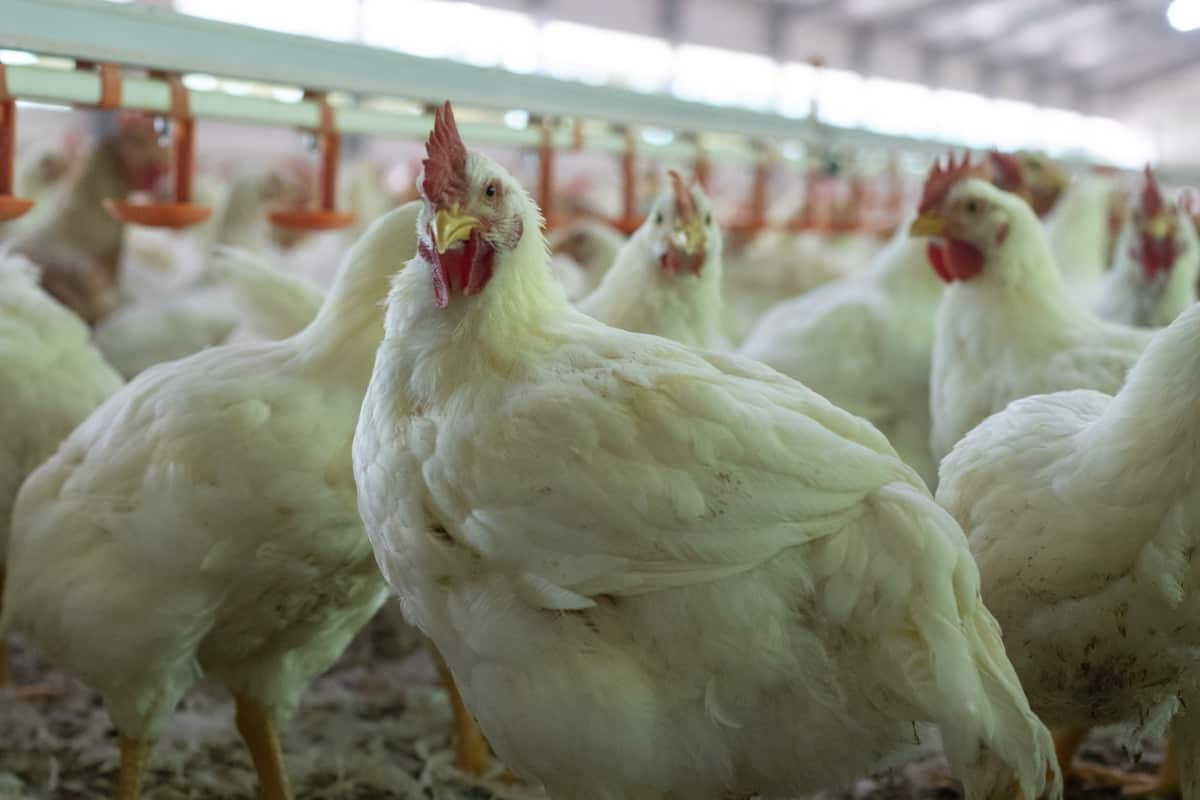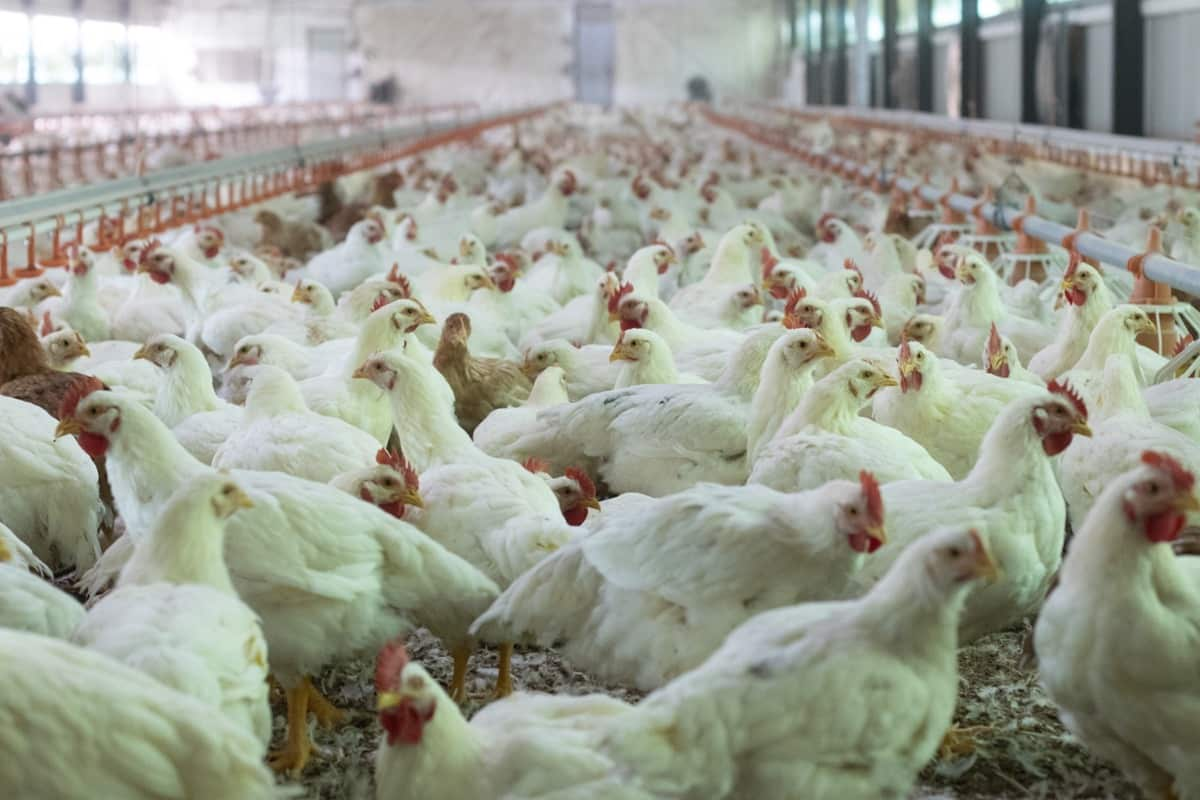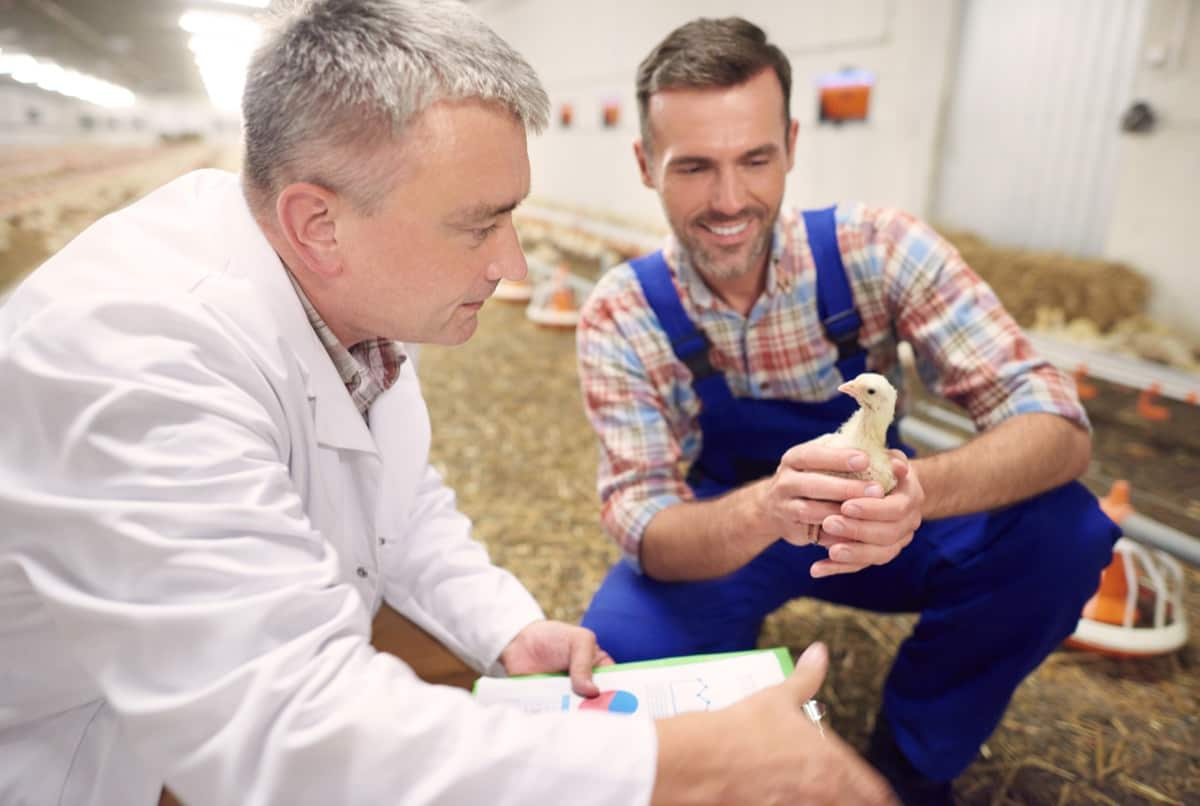This blog article explores the economic aspects of broiler chicken farming, providing a comprehensive analysis of costs and profitability. It analyzes factors affecting costs, operational expenses, and potential profits. This report is valuable for experienced farmers and those considering a new agricultural venture. Let’s check out the project report of broiler chicken farm below.

What is a Broiler Chicken Farm Project Report?
Broiler chickens are a specific breed of poultry raised primarily for meat production. They are known for their rapid growth rate, reaching market weight in a relatively short period of time. Broiler chicken farming involves rearing these chickens in a controlled environment for efficient and profitable meat production. A Broiler Chicken Farm Project Report provides a comprehensive overview of establishing and operating a broiler chicken farm.
It covers various aspects, such as the project’s economic feasibility, cost analysis, profit potential, and operational considerations. The report includes data on typical costs associated with the project, including land acquisition, construction, purchase of chicks, feed expenses, labor, veterinary services, equipment, and administrative costs.
It also delves into the profitability analysis of the broiler chicken farm, exploring factors like market demand, pricing trends, and potential revenue streams. The report emphasizes the importance of careful financial planning, assessing return on investment (ROI), and calculating the break-even point.
Project Report of Broiler Chicken Farm (Medium-sized)
- Land Acquisition: The cost of acquiring suitable land for a medium-sized broiler chicken farm can range from $20,000 to $50,000, depending on the land location and land prices.
- Construction and Infrastructure: Building broiler houses, feeding systems, water supply systems, and other necessary infrastructure can cost approximately $60,000 to $80,000, considering construction costs, materials, and labor.
- Chicks: Purchasing day-old chicks for stocking the farm’s broiler houses can contribute around $5,000 to $8,000, depending on the number of birds required.
- Feed Expenses: Feed constitutes a significant portion of operational costs. For a medium-sized farm, annual feed expenses can range from $40,000 to $60,000, considering the number of birds, growth rate, and feed prices.
- Labor Costs: Hiring and managing a team of skilled workers for daily farm operations, including feeding, cleaning, and health monitoring, can incur an annual labor cost of approximately $15,000 to $25,000.
- Veterinary Services: The cost of regular veterinary care, vaccinations, and medications may amount to around $3,000 to $5,000 per year.
- Equipment and Miscellaneous Expenses: Equipment such as feeders, waterers, heating systems, and biosecurity measures, along with other miscellaneous expenses, may contribute an additional $10,000 to $15,000.
In case you missed it: From Cornish Cross to Red Ranger: Ranking the Best Broiler Chicken Breeds

| Cost Components | Cost Range (USD) |
| Land Acquisition | $20,000 – $50,000 |
| Construction and Infrastructure | $60,000 – $80,000 |
| Chicks | $5,000 – $8,000 |
| Feed Expenses | $40,000 – $60,000 |
| Labor Costs | $15,000 – $25,000 |
| Veterinary Services | $3,000 – $5,000 |
| Equipment and Miscellaneous | $10,000 – $15,000 |
| Total Investment | $183,000 – $263,000 |
Broiler Chicken Farming Economics
Broiler chicken farming economics focuses on understanding the financial aspects of the industry, including revenue generation, cost analysis, profit margin, return on investment (ROI), and market factors. Market demand, pricing trends, and production volume all impact revenue generation, but meat sales are the main driver of revenue generation.
Cost analysis is crucial for profitability, considering feed expenses, labor, housing, veterinary care, and equipment. Profit margins depend on the difference between revenue and expenses, and efficient management practices and cost control measures maximize profit margins. Understanding market trends, consumer preferences, and competition is crucial for optimizing profits and adapting to changing market conditions.
Profit Analysis for Broiler Chicken Farms
A medium-sized farm producing 20,000 broiler chickens annually can generate $250,000 in revenue. Feed costs, including labor and other expenses, range from $40,000 to $60,000 annually. The total cost of feed is approximately $140,000. Allocating $50,000 per year for labor, veterinary services, and equipment maintenance, the farm can allocate an average of $50,000 per year. Subtracting these expenses from the revenue of $250,000 yields a net profit of $60,000.
| Revenue | Expenses (Feed, Labor, Vet, Equipment) | Net Profit |
| $250,000 | $140,000 | $60,000 |
In case you missed it: Feed Management in Broiler Chickens: Feeding Plan, Feed Formula, and Feed Requirement

Initial Investment in Broiler Chicken Farming
A medium-sized broiler chicken farm typically requires an initial investment of $105,000 to $163,000. This includes land acquisition, construction, infrastructure, day-old chicks, equipment and miscellaneous expenses, and miscellaneous costs. Land acquisition costs can range from $30,000 to $60,000, while construction and infrastructure costs can range from $60,000 to $80,000.
Baby chickens can be purchased for stocking the farm, and equipment expenses can range from $10,000 to $15,000. Overall, the total investment for a medium-sized broiler chicken farm is typically between $105,000 and $163,000.
Operational Expenses for Broiler Chicken Farms
Medium-sized broiler chicken farms face operational expenses ranging from $40,000 to $60,000 annually. Feed costs are significant, accounting for $30,000 to $40,000. Labor costs include hiring and managing a skilled workforce, while veterinary services cost around $3,000 to $5,000 annually. Additional expenses include electricity, heating, ventilation, and water supply.
Market Trends and Demand for Broiler Chicken
Broiler chicken is a popular protein choice globally due to its affordability, versatility, and lean meat preference. As urbanization and income levels rise, demand for this dietary staple increases. Export opportunities are also a significant driver of broiler chicken production.
Consumers’ busy lifestyles have increased demand for value-added and convenience products like marinated or pre-cut broiler chicken. Health and nutrition awareness has created a demand for broiler chicken, a lean protein source with lower fat content. Sustainability and ethical treatment of animals are also driving the demand for responsibly sourced broiler chicken.
Risk Assessment in Broiler Chicken Farming
Broiler chicken farming faces various risks, including disease outbreaks, market volatility, feed price variations, natural disasters, regulatory compliance, financial risks, and market competitiveness. Disease outbreaks can lead to significant losses and increased mortality rates, while market volatility, feed price fluctuations, and natural disasters can impact profitability and sales.
Regulatory compliance can result in penalties, legal issues, and reputational damage. Financial risks, such as unforeseen expenses and cost overruns, can strain the farm’s financial stability. Strategic decision-making and positioning are crucial for success in the broiler chicken industry.
Return on Investment in Broiler Chicken Farms
Return on Investment (ROI) in broiler chicken farms for a medium-sized farm can vary based on multiple factors, including market conditions and operational efficiency. On average, a well-managed broiler chicken farm can expect an ROI of approximately 15% to 30%.
Factors to Consider Before Investing in Broiler Chicken Farming
Before investing in broiler chicken farming, consider factors such as market analysis, location, regulatory compliance, expertise, and financial planning. Analyze market trends, identify potential buyers or distributors, choose a suitable location with convenient transportation, utilities, and a favorable climate, and understand local regulations. Assess your knowledge and experience or hire experienced professionals. Develop a comprehensive business plan to ensure a successful venture, including investment costs, operational expenses, and revenue projections.
In case you missed it: How to Start Broiler Chicken Farming in 10 Steps: Business Plan, Management, and Care

Primary Operational Expenses in Running a Broiler Chicken Farm
Primary operational expenses in running a broiler chicken farm include feed costs, labor costs, veterinary services, utilities, and equipment and maintenance. Feed costs typically account for 60-70% of the total costs, with varying costs depending on the type and quality of feed used.
Labor costs involve hiring and managing workers for feeding, watering, cleaning, and monitoring the flock. Veterinary services, utilities, equipment, and maintenance costs are essential for maintaining the health of broiler chickens. These expenses can vary depending on the operation’s scale, technological advancements, and the region’s cost of living.
Conclusion
Broiler Chicken Farm Project Report provides a comprehensive analysis of the economics, costs, and profitability of broiler chicken farming. It offers valuable insights for potential investors, highlighting the key factors and considerations necessary for a successful and financially viable venture.
- Feed Your Flock for Less: Top 10 Tips to Save on Chicken Feed
- Ultimate Guide to Ossabaw Island Hog: Breeding, Raising, Diet, and Care
- Hatching Answers: The Top 10 Reasons Your Chickens Aren’t Laying Eggs
- Eggs and Economics: Breaking Down the Cost of Raising Backyard Chickens
- Defend Your Greens: Proven Methods to Keep Iguanas Out of Your Garden
- Ultimate Guide to Cinnamon Queen Chicken: A Comprehensive Guide for Beginners
- Ultimate Guide to California Tan Chicken: Breeding, Raising, Diet, Egg-Production and Care
- Ultimate Guide to Marsh Daisy Chicken: Breeding, Raising, Diet, and Care
- 10 Types of Chicken Farming Businesses You Can Start for Profits